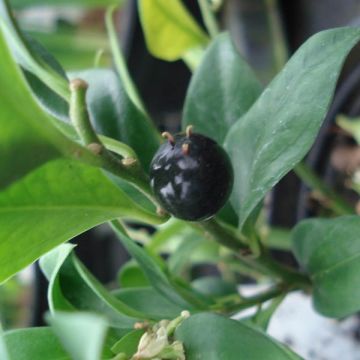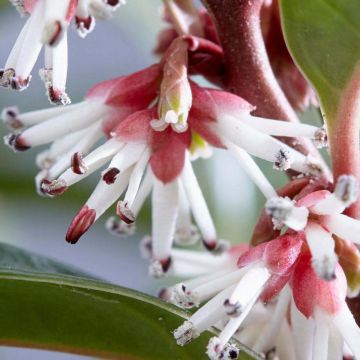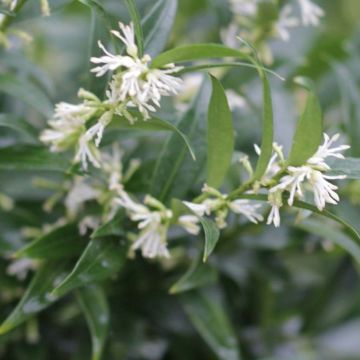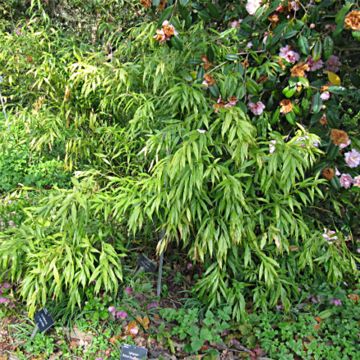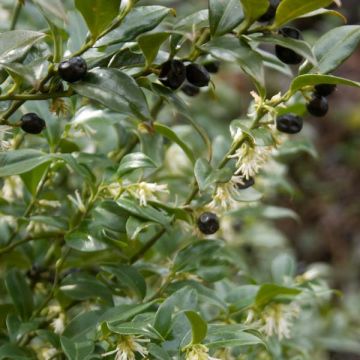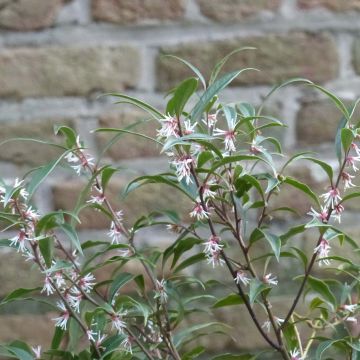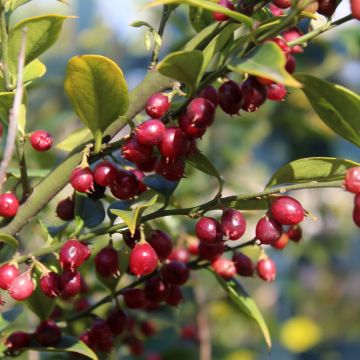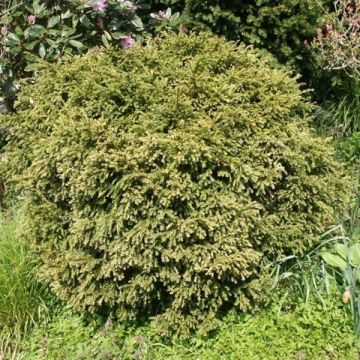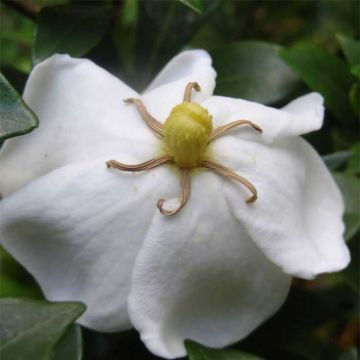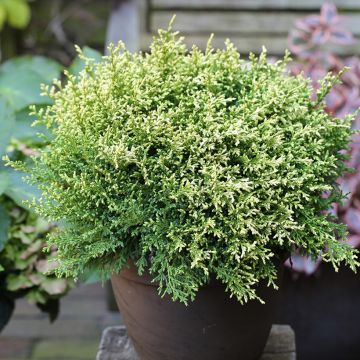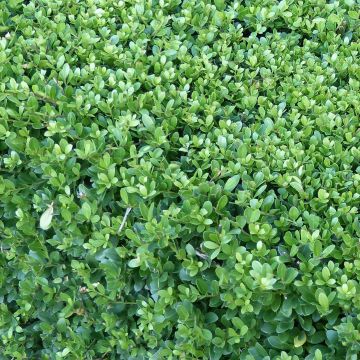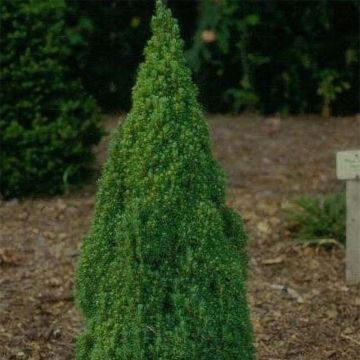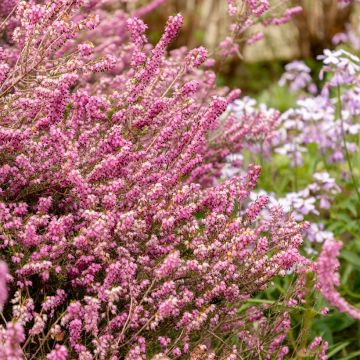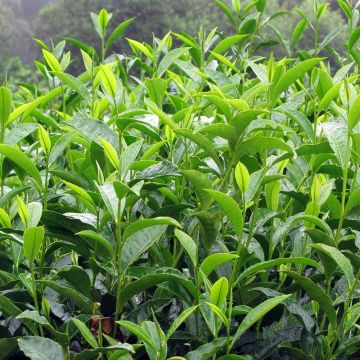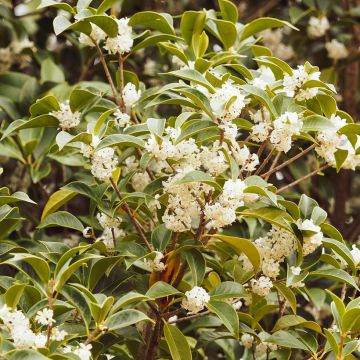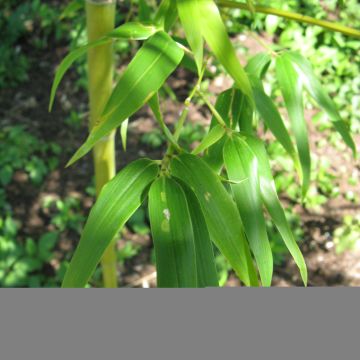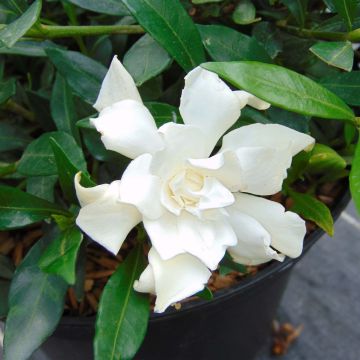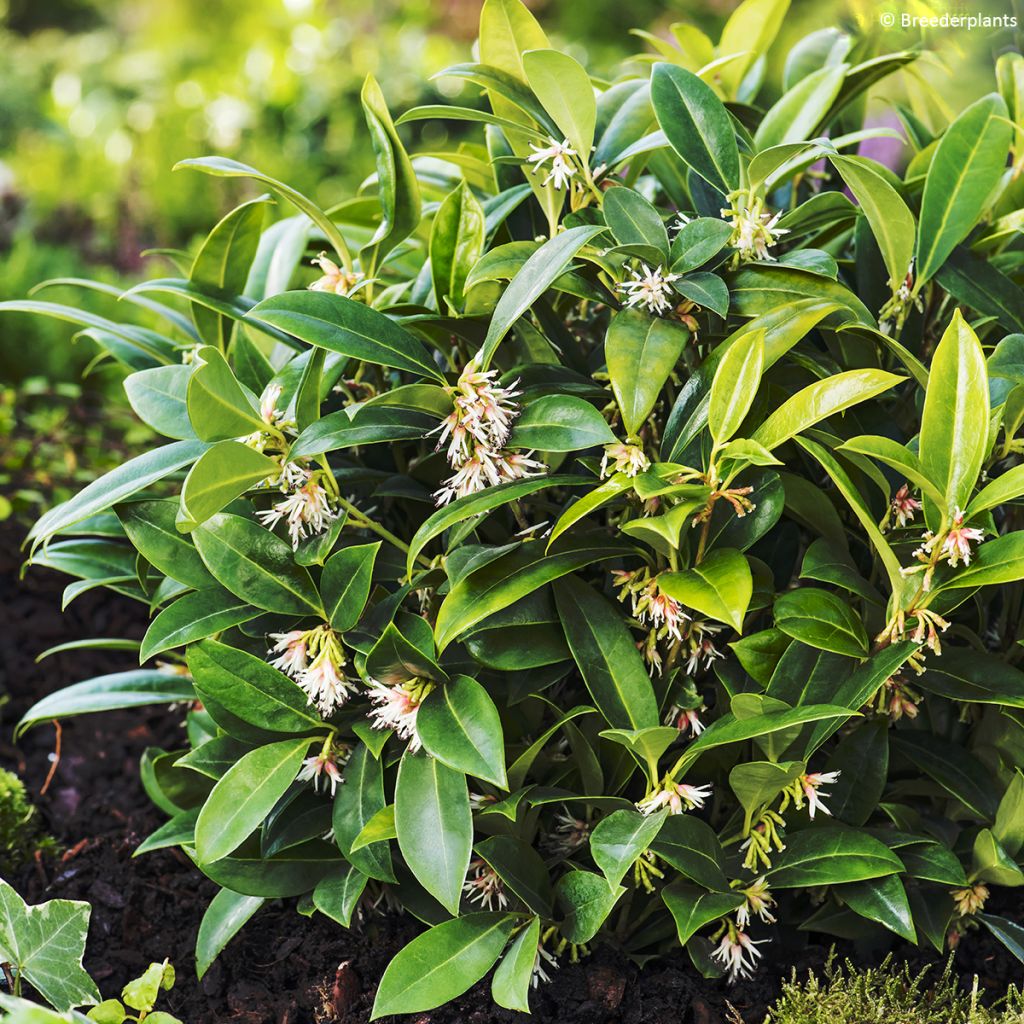

Sarcococca hookeriana var. humilis Fragrant Mountain - Himalayan sweet box
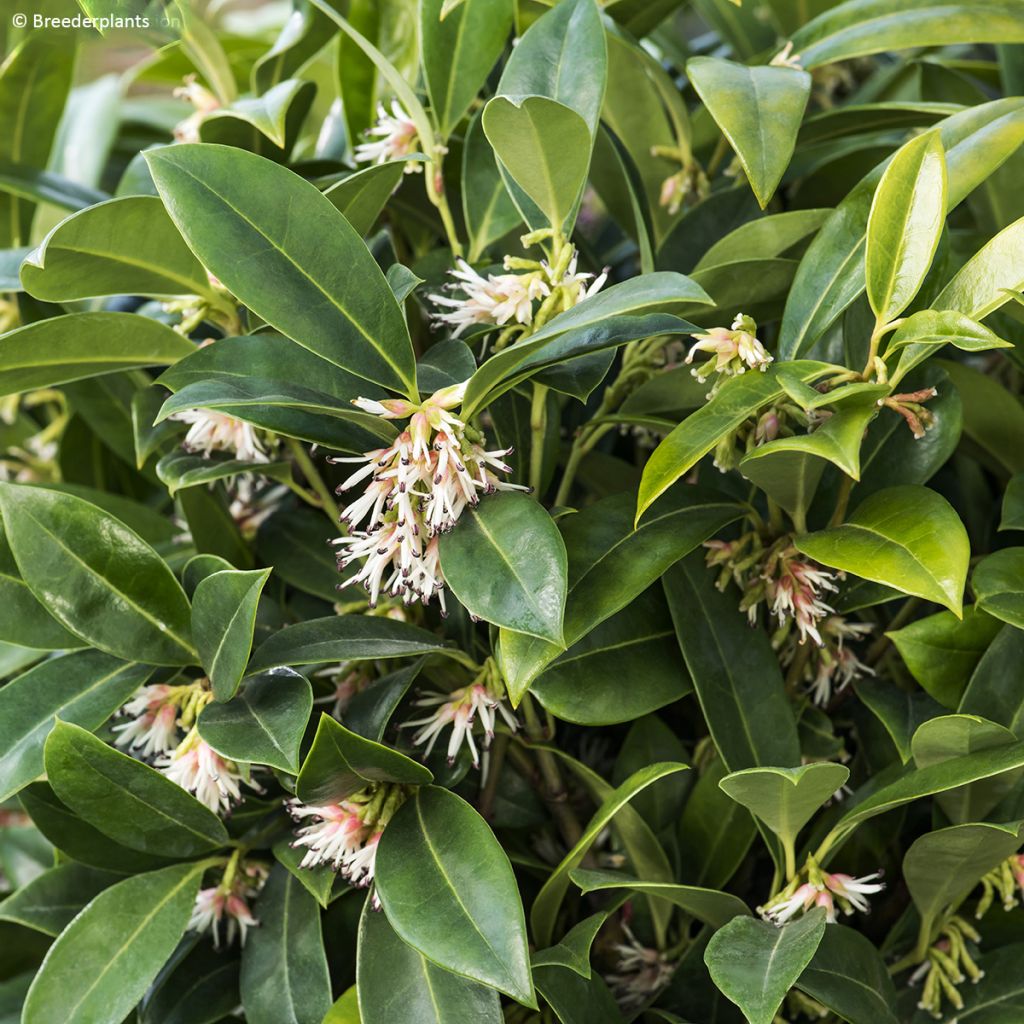

Sarcococca hookeriana var. humilis Fragrant Mountain - Himalayan sweet box
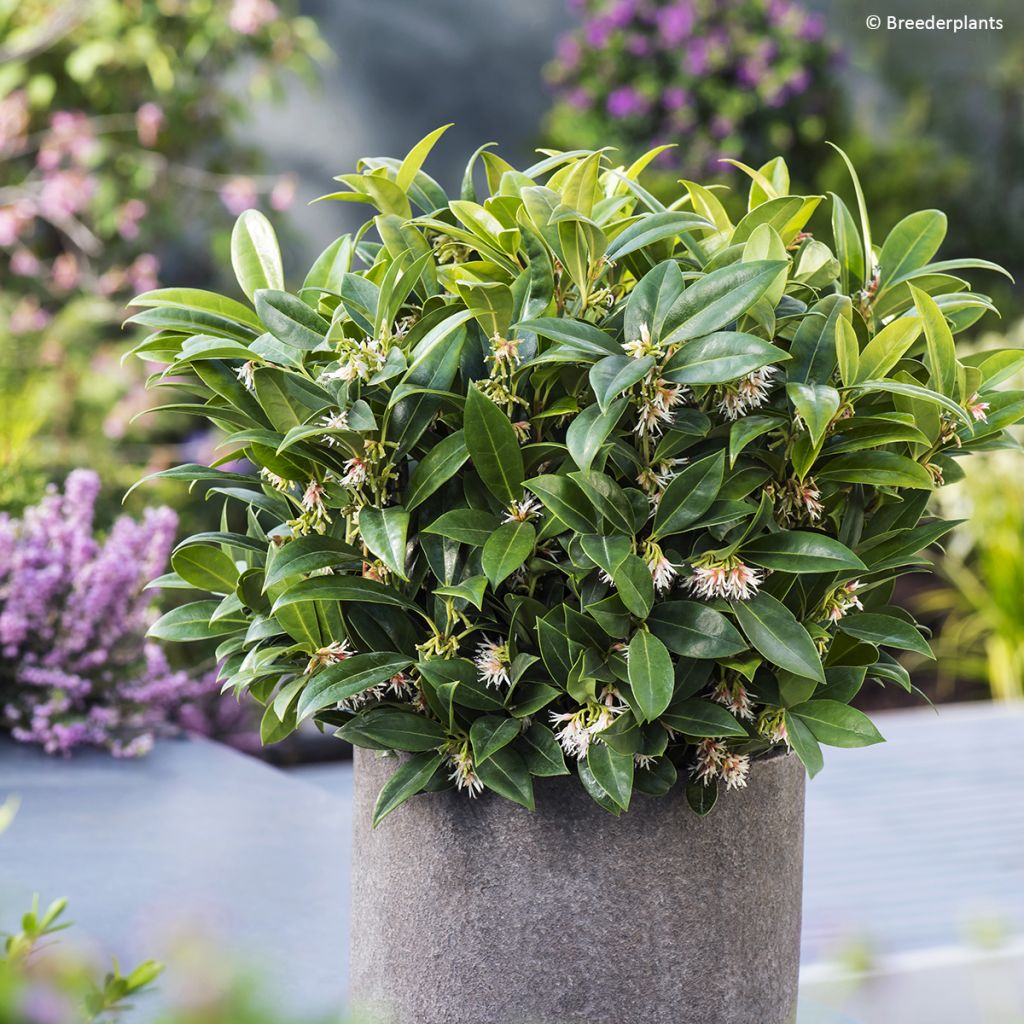

Sarcococca hookeriana var. humilis Fragrant Mountain - Himalayan sweet box
Sarcococca hookeriana var. humilis Fragrant Mountain - Himalayan sweet box
Sarcococca hookeriana var. humilis Fragrant Mountain® 'Sarsid4' cov
Sweet Box, Dwarf Sweet Box
Why not try an alternative variety in stock?
View all →This plant carries a 24 months recovery warranty
More information
We guarantee the quality of our plants for a full growing cycle, and will replace at our expense any plant that fails to recover under normal climatic and planting conditions.
From €5.90 for pickup delivery and €6.90 for home delivery
Express home delivery from €8.90.
Does this plant fit my garden?
Set up your Plantfit profile →
Description
Sarcococca hookeriana var. humilis Fragrant Mountain is particularly attractive due to its long, decorative and pleasantly scented winter flowering. This compact and sturdy shrub, which slowly spreads, has very aesthetic dark green evergreen foliage throughout the year. This sarcococca prefers a shady or semi-shady exposure, easily settling between the roots of trees that will protect it from direct sunlight. It is easy to grow and thrives in most soils, even tolerating some limestone, but will be more comfortable in acidic to neutral soil, rich in humus and with a tendency to be moist.
Sarcococca is a member of the small Buxaceae family, which also includes Boxwoods (Buxus) and Pachysandra, a valuable ground cover for shaded areas. The etymology of the name Sarcococca refers to the Greek words sarx (flesh) and kokkos (berry), in reference to the fleshy fruits of these plants. S. hookeriana is one of the twenty species in the genus, native to the Asian continent. This shrub itself is native to the mountainous forest areas of the Himalayas, between 2100 and 3600 metres above sea level.
The Fragrant Mountain 'Sarsid4' variety is a selection from breeder Gurjit Sidhu (British Columbia, Canada), resulting from a random sowing of Sarcococca hookeriana var. humilis and introduced to the market in 2002. It has a relatively slow growth and forms a dense tuft, which generally reaches a height of 60 cm and a width of 90 cm in 10 years. It is a rhizomatous species, with stoloniferous, suckering, and running branches that produce numerous shoots, allowing it to spread over time. Its slender green branches are adorned with elliptical to lanceolate leaves, with a pointed tip, measuring 5 to 7 cm in length and 1 to 1.5 cm in width. The evergreen leaves only renew themselves after several years, forming a very dense and well-filled tuft. Uniform dark green, their surface is slightly glossy, and the dark vegetation provides a perfect backdrop for the light-coloured flowering. From January onwards, with a few days of mild weather, the dormant flower buds awaken and produce a quantity of small cream-white flowers, delicately tinged with pink at the base. The tubular flowers measure 3 to 5 mm in length and have no petals, their distinctive pattern is solely due to the visible stamens. Grouped in clusters in the axils of the leaves, they are quite decorative despite their small size, and above all, they emit a pleasant honey fragrance several meteres around the shrub. Not content with braving the winter and offering its fragrance, this flowering is also long-lasting, blooming for about two months. When pollinated, the female flowers produce small dark red to black, shiny, non-edible but non-toxic fruits.
Sarcococca hookeriana var. humilis Fragrant Mountain is a true gem for the shady areas of the garden, brightening them up with its graceful flowering during a time when flowers are scarce. Its fragrance is an additional asset that makes it a must-have. To create a beautiful winter bed, plant some Christmas Roses (Helleborus orientalis) at the base of your Sarcococca, preferably choosing those with purple flowers to create strong contrasts. These perennials bloom at the same time as Fragrant Mountain and have the same cultural requirements. In the background, plant a Japanese Maple such as Acer japonicum Vitifolium, with large palmate leaves reminiscent of grapevines (Vitis), hence its name, which will reward you in autumn with magnificent bright orange and crimson red colours. And to end the year on a high note, Camellia sasanqua Sekiyo (Autumn Camellia) will delight you with its raspberry pink flowers enhanced with a golden centre. To perfume your terrace, you can also grow Sarcococca in a pot...
Report an error about the product description
Sarcococca hookeriana var. humilis Fragrant Mountain - Himalayan sweet box in pictures


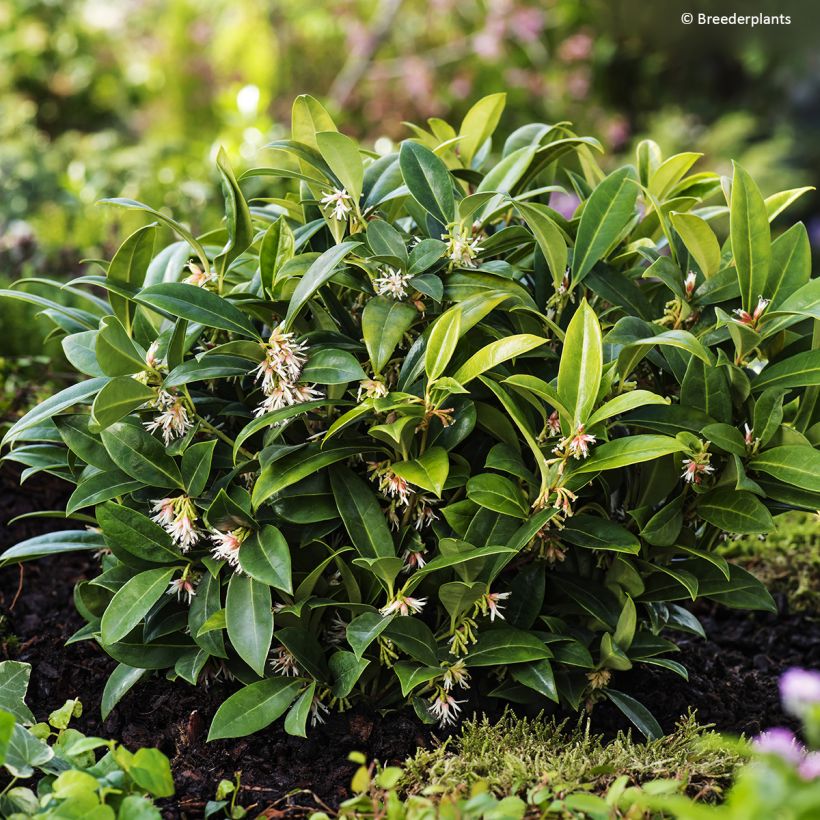

Plant habit
Flowering
Foliage
Botanical data
Sarcococca
hookeriana var. humilis
Fragrant Mountain® 'Sarsid4' cov
Buxaceae
Sweet Box, Dwarf Sweet Box
Cultivar or hybrid
Other Sarcococcas
Planting and care
Sarcococca hookeriana Fragrant Mountain is fairly undemanding. While it is much more beautiful in oceanic climates, the Sarcococca can thrive anywhere. It is a fairly hardy bush that can withstand occasional temperatures as low as -15 °C. It thrives in shady or semi-shady locations.
From October to November and from March to June, plant it in a light and dry soil, sheltered from strong and drying winds. It can tolerate some limestone, but prefers humus-bearing, slightly acidic, moist, but well-drained soils. While Sarcococca can be associated with acid soil plants, it also grows very well in neutral soil.
Dig a hole at least three times the volume of the root ball. It needs good drainage (its roots do not like stagnant moisture) with about twenty centimetres of drainage at the bottom of the planting hole. Add compost or ericaceous soil to the garden soil, and possibly some coarse sand to lighten it. Spread organic mulch to finish. Water abundantly after transplantation and for two to three weeks. From the second year, a few summer waterings are sufficient in case of dry periods. Once well rooted, it shows good resistance to drought. In cold areas, mulch its base during the first winters or in case of exceptional cold.
Pot cultivation is easy, in a container of about twenty litres filled with a mixture of potting soil and 20% sand. Placed on a shaded terrace, near the house, you will enjoy its fragrance all winter.
Feeding consists of applying compost on the surface in autumn. For potted plants, repotting every five years will be necessary. It is tough, tolerates pollution well and is never sick or attacked by parasites.
Planting period
Intended location
Care
This item has not been reviewed yet - be the first to leave a review about it.
Evergreen shrubs
Haven't found what you were looking for?
Hardiness is the lowest winter temperature a plant can endure without suffering serious damage or even dying. However, hardiness is affected by location (a sheltered area, such as a patio), protection (winter cover) and soil type (hardiness is improved by well-drained soil).

Photo Sharing Terms & Conditions
In order to encourage gardeners to interact and share their experiences, Promesse de fleurs offers various media enabling content to be uploaded onto its Site - in particular via the ‘Photo sharing’ module.
The User agrees to refrain from:
- Posting any content that is illegal, prejudicial, insulting, racist, inciteful to hatred, revisionist, contrary to public decency, that infringes on privacy or on the privacy rights of third parties, in particular the publicity rights of persons and goods, intellectual property rights, or the right to privacy.
- Submitting content on behalf of a third party;
- Impersonate the identity of a third party and/or publish any personal information about a third party;
In general, the User undertakes to refrain from any unethical behaviour.
All Content (in particular text, comments, files, images, photos, videos, creative works, etc.), which may be subject to property or intellectual property rights, image or other private rights, shall remain the property of the User, subject to the limited rights granted by the terms of the licence granted by Promesse de fleurs as stated below. Users are at liberty to publish or not to publish such Content on the Site, notably via the ‘Photo Sharing’ facility, and accept that this Content shall be made public and freely accessible, notably on the Internet.
Users further acknowledge, undertake to have ,and guarantee that they hold all necessary rights and permissions to publish such material on the Site, in particular with regard to the legislation in force pertaining to any privacy, property, intellectual property, image, or contractual rights, or rights of any other nature. By publishing such Content on the Site, Users acknowledge accepting full liability as publishers of the Content within the meaning of the law, and grant Promesse de fleurs, free of charge, an inclusive, worldwide licence for the said Content for the entire duration of its publication, including all reproduction, representation, up/downloading, displaying, performing, transmission, and storage rights.
Users also grant permission for their name to be linked to the Content and accept that this link may not always be made available.
By engaging in posting material, Users consent to their Content becoming automatically accessible on the Internet, in particular on other sites and/or blogs and/or web pages of the Promesse de fleurs site, including in particular social pages and the Promesse de fleurs catalogue.
Users may secure the removal of entrusted content free of charge by issuing a simple request via our contact form.
The flowering period indicated on our website applies to countries and regions located in USDA zone 8 (France, the United Kingdom, Ireland, the Netherlands, etc.)
It will vary according to where you live:
- In zones 9 to 10 (Italy, Spain, Greece, etc.), flowering will occur about 2 to 4 weeks earlier.
- In zones 6 to 7 (Germany, Poland, Slovenia, and lower mountainous regions), flowering will be delayed by 2 to 3 weeks.
- In zone 5 (Central Europe, Scandinavia), blooming will be delayed by 3 to 5 weeks.
In temperate climates, pruning of spring-flowering shrubs (forsythia, spireas, etc.) should be done just after flowering.
Pruning of summer-flowering shrubs (Indian Lilac, Perovskia, etc.) can be done in winter or spring.
In cold regions as well as with frost-sensitive plants, avoid pruning too early when severe frosts may still occur.
The planting period indicated on our website applies to countries and regions located in USDA zone 8 (France, United Kingdom, Ireland, Netherlands).
It will vary according to where you live:
- In Mediterranean zones (Marseille, Madrid, Milan, etc.), autumn and winter are the best planting periods.
- In continental zones (Strasbourg, Munich, Vienna, etc.), delay planting by 2 to 3 weeks in spring and bring it forward by 2 to 4 weeks in autumn.
- In mountainous regions (the Alps, Pyrenees, Carpathians, etc.), it is best to plant in late spring (May-June) or late summer (August-September).
The harvesting period indicated on our website applies to countries and regions in USDA zone 8 (France, England, Ireland, the Netherlands).
In colder areas (Scandinavia, Poland, Austria...) fruit and vegetable harvests are likely to be delayed by 3-4 weeks.
In warmer areas (Italy, Spain, Greece, etc.), harvesting will probably take place earlier, depending on weather conditions.
The sowing periods indicated on our website apply to countries and regions within USDA Zone 8 (France, UK, Ireland, Netherlands).
In colder areas (Scandinavia, Poland, Austria...), delay any outdoor sowing by 3-4 weeks, or sow under glass.
In warmer climes (Italy, Spain, Greece, etc.), bring outdoor sowing forward by a few weeks.

































